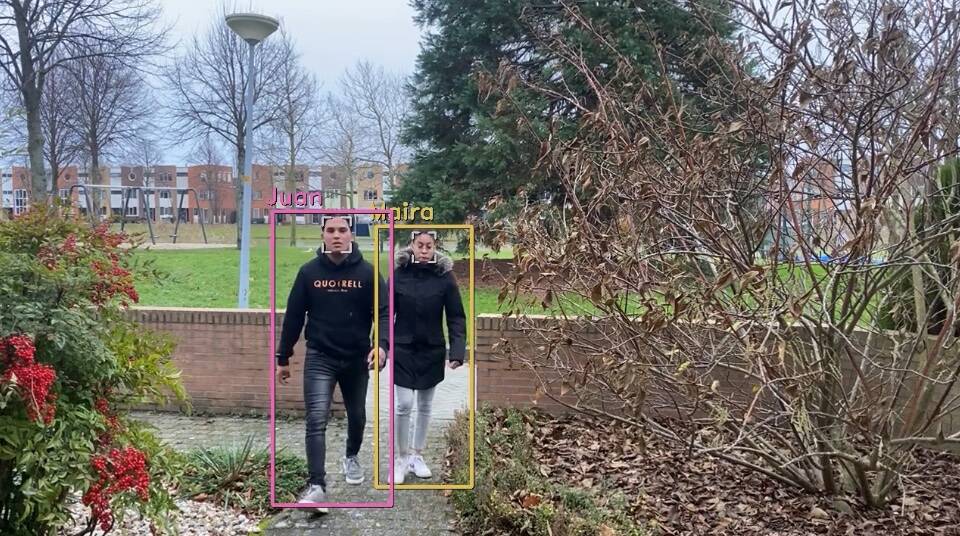Plumerai Familiar Face Identification¶
At Plumerai we’ve built the world’s most accurate familiar face identification that is tiny and fast. It identifies people with a high accuracy in any situation, and runs at the edge or in the cloud.
You can try our face identification live in the browser with your webcam.
We provide two versions of familiar face identification:
1. Version with automatic face enrollment¶
This version automatically enrolls new faces in the face library. The user can tag each identified person with a name afterward.
2. Version with manual face enrollment¶
This version allows the user to explicitly enroll new faces in the face library. This is typically used in a scenario where users scan all sides of their face with an app on a phone.
Technical documentation¶
We have split the documentation into four sections:
- For familiar face identification with automatic face enrollment:
- For familiar face identification with manual face enrollment:
For information about tracking, robustness, camera support, privacy, and lighting, distance, mounting, and location requirements, see the People Detection Overview.
Familiar face identification features¶
State-of-the-art face identification¶
Our solution uses an end-to-end deep learning approach that consists of three neural networks: one for object detection, one for face representation, and one for face matching. We have applied various advanced model design, compression, and training techniques to make these networks fit within the hardware constraints of small CPUs and NPUs, while retaining excellent accuracy.

Enrollment¶
Our algorithm supports loading and storing a face library. The storage requirement for an enrollment of a single user is very small, as low as 512 bytes. For ease of integration, the face enrollment API is integrated in the regular usage API. In other words, Plumerai provides a single library/header/API that can both be used for regular operation and adding new faces to the face library, which makes it easy for developers to start using the Plumerai software.
Identity assignment¶
Our algorithms assign identities to person boxes, but it does so using face detections. When it can uniquely match a face to a person, the identity of the person box should match that of the matched face box. However, the algorithm can’t always be certain which face belongs to which tracked person, especially when people are standing close to each other. Tracking people is also more reliable than tracking faces, since people’s faces can for instance be turned away from the camera for a moment. Therefore, it is common that the identity of the person is known even when the identity of a face is unknown. Also, a new face might be associated with an already identified person. The identity of that person will then be determined by the information of both faces that were associated with it, and the strongest match will be selected.